'Purple for the heather'
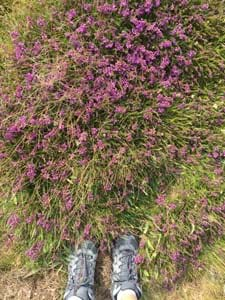
The Isle of Man’s stunning, varied and ever-changing landscape has long fascinated locals and visitors alike, and it’s seemingly endless collection of glens, hills, beaches and forests provide a unique environment for flora, fauna and people to thrive within. It’s no wonder the Isle of Man holds the status of a Unesco World Biosphere region - an award which recognises the island’s diverse natural habitats and the way in which the local population exists alongside them.
The blend of heathland, upland, woodland and grassland, all enclosed and fringed with beaches, coves and rocky coastline has come to represent the island’s national identity.
This unique landscape has been captured and replicated within the colours of the Isle of Man’s national tartan, the first version of which was designed in 1957 by Patricia ‘Paddy’ McQuaid.
Early Scottish tartans were simple checks of two or three colours. The colours were extracted mainly from dye-producing plants, roots, berries and trees local to a specific area. These tartans were worn by the people of the district where they were made, and as such became the area or clan tartan.
In an echo of these early practices, McQuaid was inspired by the colours of the landscape around her. Most tartans have between three and five colours so the Manx Tartan was unusual in that it contained seven colours, each representing a particular element: light blue for the sky, green for the hills and valleys, purple for the heather, gold for the gorse, red for the fuchsia, white for the cottages and dark blue for the sea.
In an interview recorded in 2012 as part of the Manx Heritage Foundation’s Oral History Project, local artist Josie Ellis recalls visits to Paddy McQuaid’s house at the Ramsey Hairpin:
“I used to visit Paddy McQuaid regularly and know the lovely house on the corner of the hairpin, and I remember seeing her weaving in a side room, given over to all her wool, and the colours of the wool for her scarf, and I believe that she definitely did design the original Manx tartan with the idea of what she saw locally through the windows – the blue sky, the green hill – she went down to the sea, saw the yellow sand and the purple on the hilltop of the heather.”
The tartan was woven at Laxey Woollen Mills, which is the only remaining woollen mill on the Island. In 1978, following a difference of opinion, McQuaid removed the tartan and so Robert Wood, the owner of the Mills designed a new Manx-themed tartan using five colours: blue for the sea, gold for the gorse, green for the hills, purple for the heather and white for the cottages. This became known as the Laxey Manx Tartan.
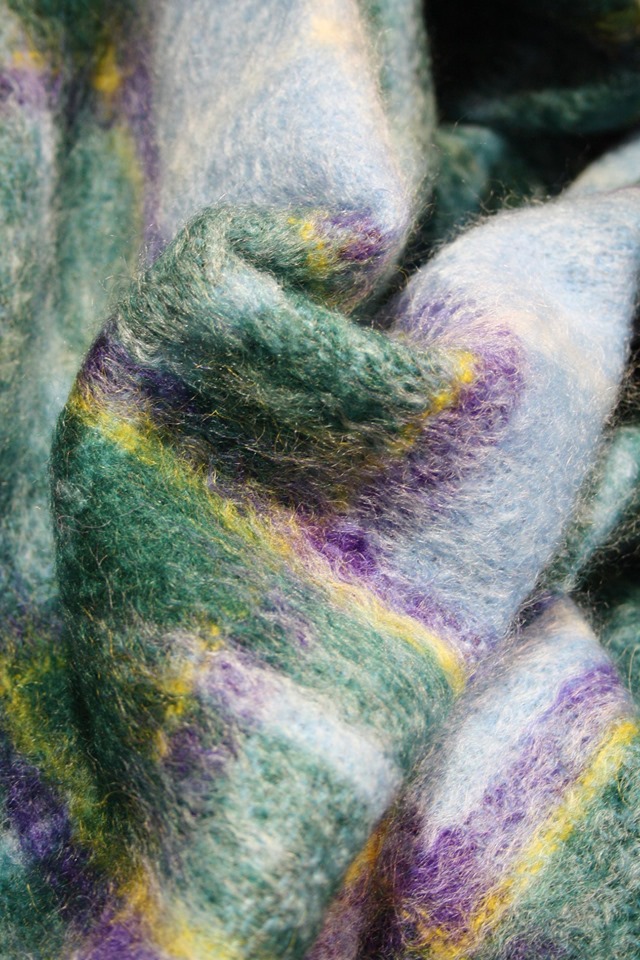
Laxey Manx Tartan Mohair rug
There is also the Manx Hunting Tartan with more browns and greys in it, and which is accompanied by the following poem:
Dark grey - the rocks; the heart of Ellan Vannin;
Grey green - her rugged valleys, hills and moors;
Clear blue - the sky above the land of Mannin;
Grey blue - the sea around her shining shores;
Bright gold - the gleam of cushag flowers a-blowing;
Pure white - the mist that lingers for a whole.
These woven on the Loom of Love are showing,
The soft lived fabric of Manannan's Isle.
The following is an alternative interpretation of the colours:
Dark grey for the rocks,
Deep green for the glens,
Tawny brown for the bracken,
Gold for the cushag flowers,
Silver for the mountain streams,
White for the mist veil of Mannanan’s cloak.

The Manx Hunting Tartan
The greens, greys and blues as well as the white cottages are in evidence all year round, though the changes in seasons and weathers alter their hues, while the other colours in the landscape ebb and flow, present and absent, brightening and dimming throughout the year.
The gorse, so strongly associated with Manx scenery, flowers from January to June, welcoming in the new year with a splash of gold and its distinctive coconut scent. As the gorse begins to fade, the heather takes centre stage, flowering from July to October. A small, delicate and inconspicuous flower, yet so abundant that it transforms hillsides with its extravagant shades of mauve, pink and purple. The green bracken dies back in winter, leaving brown fronds which pepper the landscape until spring comes round once again, and tightly curled new fronds appear and unfurl into full green leaves.
The significance of each colour within the tartan and its representation of a particular detail of the Manx landscape brings the material alive - the fabric takes on a new meaning and a piece of woven cloth is transformed into into a vibrant and permanent visual reminder of a very special place.
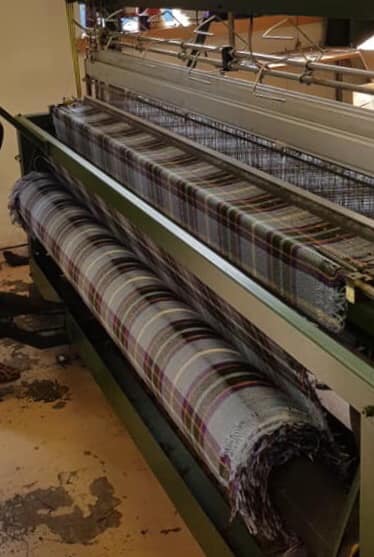
Laxey Manx Tartan rugs/scarves in the loom at Laxey Woollen Mills
I have a Laxey Manx Tartan rug myself, which my grandparents gave to me when, as an eighteen year old, I left the Isle of Man to study at Sheffield University. It brought me warmth and comfort during my time away from the island and, once spread upon my bed, made my small room in halls of residence and later in a rundown student house feel like home, offering me a connection to the island.
It's now a little frayed in places, but my Manx Tartan rug retains pride of place on my bed today, and I still can't quite decide whether ‘white for the cottages’ or ‘purple for the heather’ is my favourite colour. Which is yours?
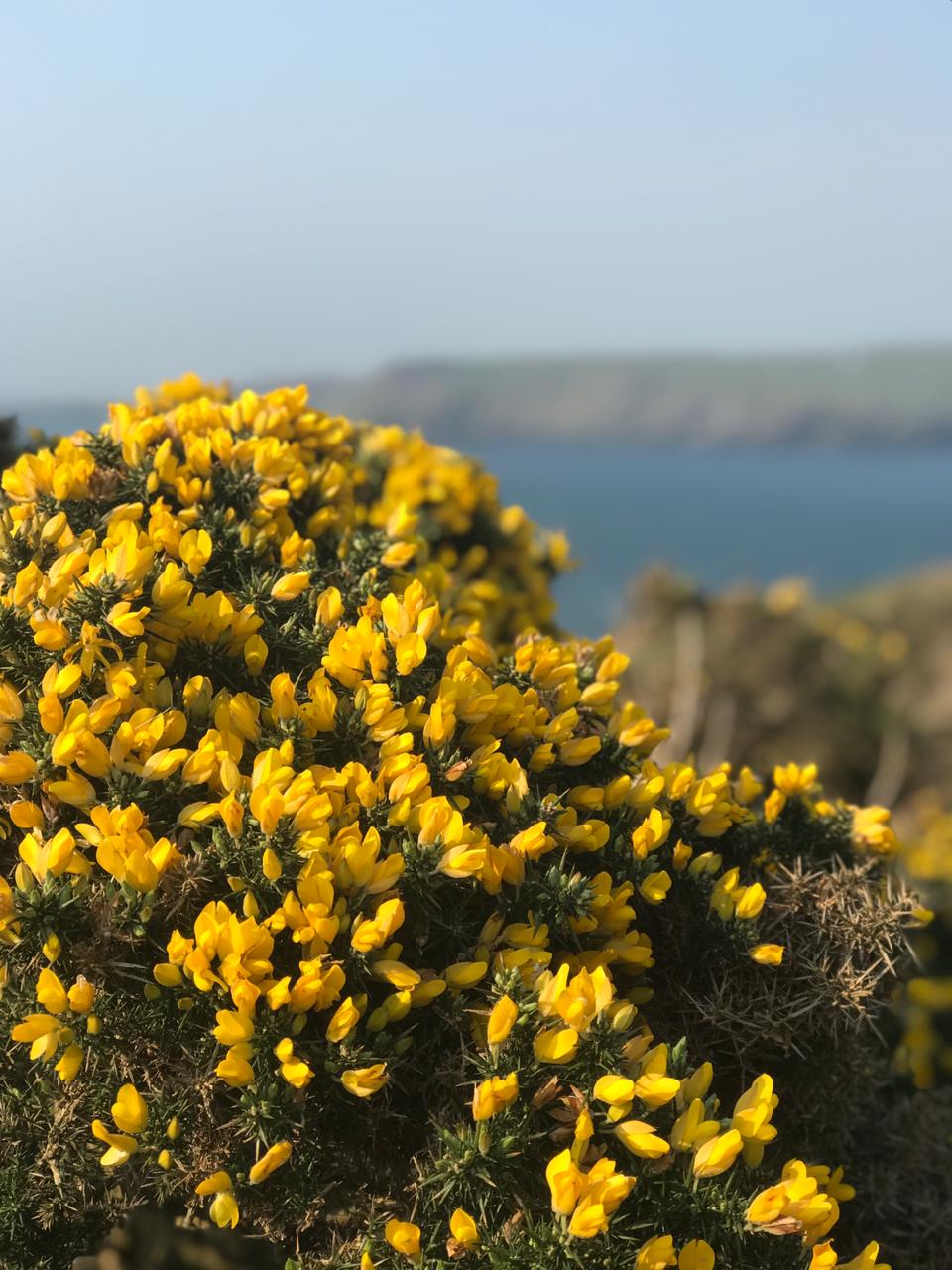
Gold for the gorse

Green bracken
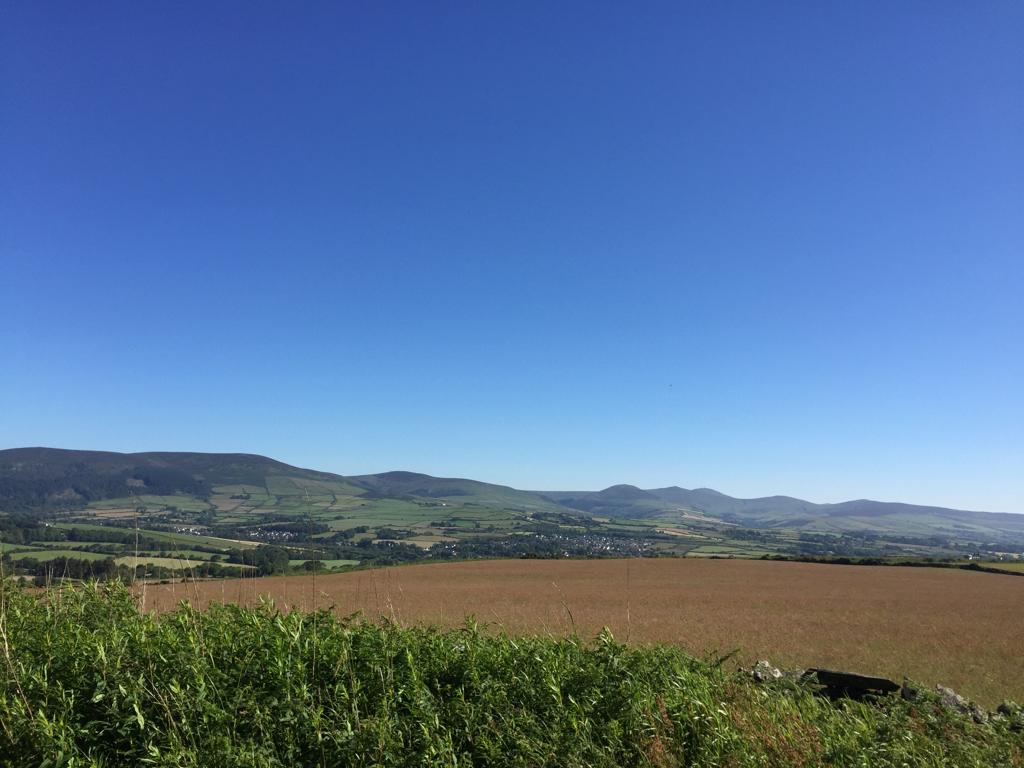
'The Plains of Heaven' a wonderfully apt name for the beautiful
Manx landscape, viewed from Chibbanagh Plantation at the Braaid
Photo credit for the photo of the mohair Laxey Manx Tartan and the loom photo: The Manx Tartan Shop (https://www.presenceofmann.com)
Photo credit for the photo of the hunting tartan fabric: Spruce London
